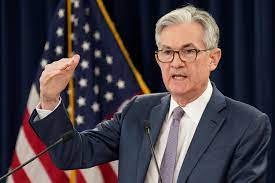Fed Chair Jerome Powell
“Uncertainty about the economic outlook has increased further,” the FOMC said at the end of a two-day meeting during which officials agreed unanimously to keep the central bank’s benchmark interest rate steady in the 4.25%-4.50% range
WASHINGTON: The Federal Reserve held interest rates steady on Wednesday but said the risks of higher inflation and unemployment had risen, further clouding the economic outlook as the U.S. central bank grapples with the impact of Trump administration tariff policies.
The economy overall has “continued to expand at a solid pace,” the Fed said in a policy statement, attributing a drop in first-quarter output to record imports as businesses and households rushed to front-run new import taxes.
The labor market also remained “solid” and inflation was still “somewhat elevated,” the central bank’s policy-setting Federal Open Market Committee said, repeating the language used in its previous statement.
But the latest statement highlighted developing risks that could leave the Fed with difficult choices in coming months.
“Uncertainty about the economic outlook has increased further,” the FOMC said at the end of a two-day meeting during which officials agreed unanimously to keep the central bank’s benchmark interest rate steady in the 4.25%-4.50% range.
“The Committee is attentive to the risks to both sides of its dual mandate and judges that the risks of higher unemployment and higher inflation have risen,” the statement said.
Speaking at a press conference following the FOMC meeting, Fed Chair Jerome Powell said “despite heightened uncertainty, the economy is still in a solid position.”
He noted Fed policy will need to be nimble and said “we believe that the current stance of monetary policy leaves us well positioned to respond in a timely way to potential economic developments.”
Powell also noted that trade policy remains a source of uncertainty that affirms the Fed’s need to be in a wait-and-see mode.
“I don’t think we can say…which way this will shake out,” he said, adding “I think there’s a great deal of uncertainty about, for example, where tariff policies are going to settle out.”
U.S. stock prices briefly extended gains after the release of the Fed statement before turning lower. Treasury yields fell.
The direction of policy will depend on which of the job and inflation risks develop, or, in the more difficult outcome, whether inflation and unemployment increase together and force the Fed to choose which risk is more important to try to offset with monetary policy.

